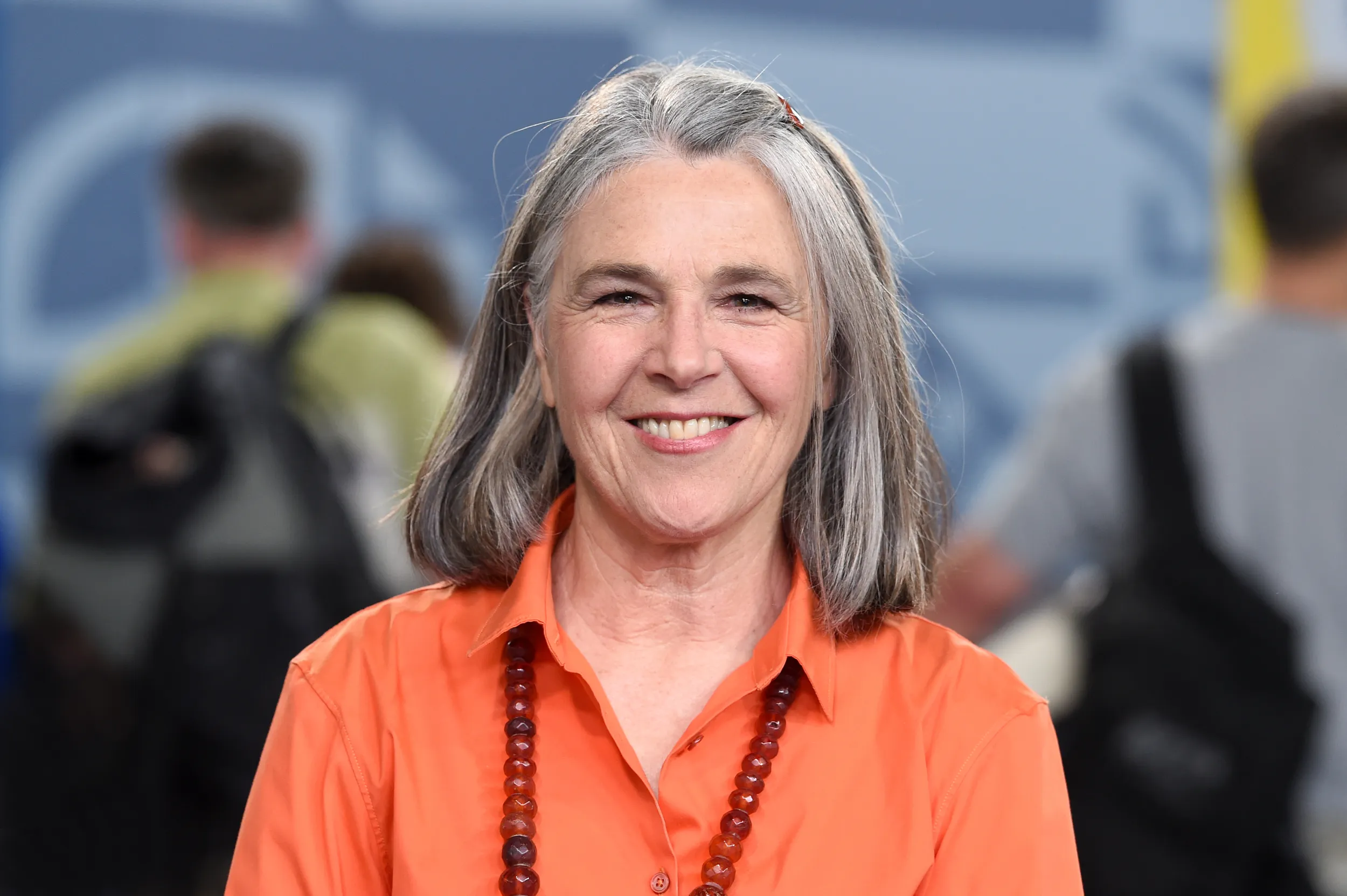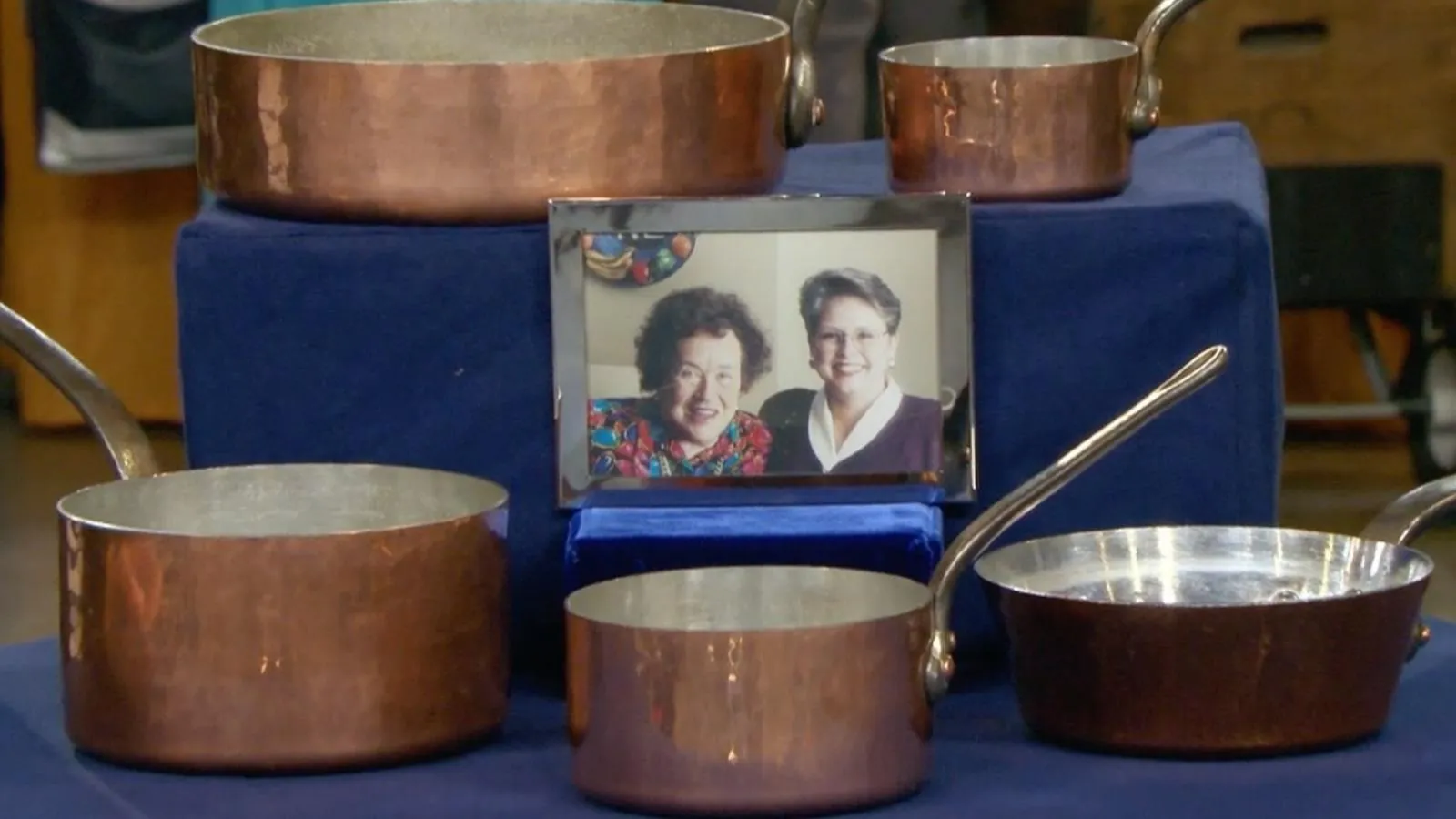GUEST: The chairs are actually from my parents, who bought them in the '70s. They bought two of the armchairs and four of the regular chairs, but never got a table. We went up to the workshop with them when we were kids, and I was very impressed with the workshop. So when I grew up, I knew I wanted to buy a Nakashima table. And so 20 years later, I was able to do that. And so the table is from 1990 or so.
APPRAISER: Uh-huh.
GUEST: And the chairs are from the ‘70s.
APPRAISER: Right, right.
GUEST: Part of the process of buying from them is going out and picking out your wood. Mira will put water on it so you can see the grain.
APPRAISER: Mm-hmm.
GUEST: It's really terrific.
APPRAISER: So George dies in 1990.
GUEST: Mm-hmm.
APPRAISER: And his daughter Mira Nakashima continues to run the business.
GUEST: Right.
APPRAISER: They're both signed pieces.
GUEST: Mm-hmm.
APPRAISER: And the chair has got a great George Nakashima signature on it. Then, of course, the table is, is signed with, with Mira, and also dated. So we've got a spectacular piece of American black walnut, and that was one of the very important things to George, is, is finding this indigenous wood.
GUEST: Mm-hmm.
APPRAISER: So great graining on it. And then the, the chairs, of course, are traditional. These are hickory stiles.
GUEST: Yes.
APPRAISER: With walnut crest rails.
GUEST: Mm-hmm.
APPRAISER: There's also a lovely conversation going on here, because of the fact that we've got an example of Mira the daughter and George the father in these.
GUEST: The father, yes.
APPRAISER: The table itself is a design very similar to what George Nakashima would have done.
GUEST: Right.
APPRAISER: 'Cause Mira is working in, from her father's influence.
GUEST: Mm-hmm.
APPRAISER: But there are, there are subtle differences. This is called a conoid table.
GUEST: Right.
APPRAISER: And the table was named after the studio. Which, fascinatingly, is this, National Historic Register of Historic Places.
GUEST: Oh, really? Okay.
APPRAISER: Yes, he is a national treasure.
GUEST: Mm-hmm.
APPRAISER: And as is the area in Solebury County and New Hope, Pennsylvania.
GUEST: Right.
APPRAISER: There's a difference that I see when I look at this Mira piece, and she has put in six of these dovetailed butterfly inlays here.
GUEST: Yes.
APPRAISER: It's more than I would expect to see on a George piece.
GUEST: Okay.
APPRAISER: She has free edges on both sides.
GUEST: Mm-hmm.
APPRAISER: Here, which is another of his aesthetics. He loved wood, and wanted the wood to speak.
GUEST: Yeah.
APPRAISER: When we compare this with the chairs...
GUEST: Yes.
APPRAISER: You've got six chairs altogether, two arms, four sides. He's working off of a Windsor aesthetic. You can see the way he's made them carefully along the top, with these dowels coming through.
GUEST: Mm-hmm, right.
APPRAISER: This is called the new chair.
GUEST: Okay.
APPRAISER: This is the, the name of the chair--and he named them after clients when he first made them.
GUEST: Mm-hmm.
APPRAISER: And he, so you bought this recently. What did you pay for the...
GUEST: I paid for the table, I think it was $5,000.
APPRAISER: $5,000. Were this by George, we would be looking at probably a $25,000 to $35,000 estimate for auction. But because it's Mira, her market has not really come into the secondary market quite yet.
GUEST: Okay.
APPRAISER: I would say that this is probably more in the $8,000 to $12,000 range, if you were to, to purchase this at auction.
GUEST: Okay.
APPRAISER: The chairs-- do you know what your parents paid for those in the '70s?
GUEST: Oh, I think my, I think it was... My mother said, like, $150 for the, uh, the armchair.
APPRAISER: The arm?
GUEST: Right. And these were $100, something along those lines.
APPRAISER: Right, right, so now these side chairs...
GUEST: Yes. ...
APPRAISER: will be bringing around $2,000 apiece, where the armchairs are probably in the $3,000 apiece range.
GUEST: Wow.











